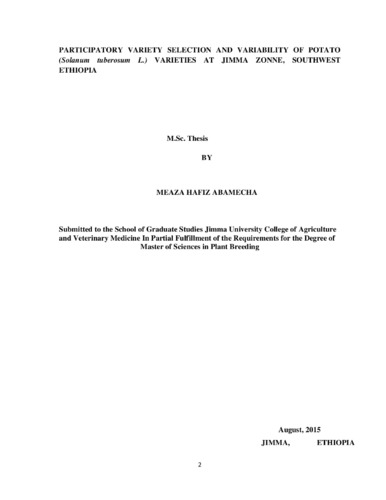Participatory variety selection and variability of potato (Solanum tuberosum l.) varieties at Jimma Zonne, southwest Ethiopia
Abstract
Wider adaptation and researchers’ criteria may not fit to all agro ecologies and fulfill farmer’s preferences. In an attempt to identify suitable potato genotypes for Jimma zone. Twenty five potato genotypes were tested in a simple lattice design at jimma zone from Debre_Birihan Agricultural Research Center were used for characterization and participatory variety selection based. With the aim of studying the problem of fitting farmers target environments and users preferences extent of genetic variation and association among yield ad related traits. Analysis of variance indicated significant difference among the 13 trait with respect to all the characters except four traits among the tested genotypes studied. Wide range of variation was observed among all traits. The phenotypic coefficients of variation values were higher than genotypic coefficients of variation values. Higher heritability coupled with higher genetic advance as per cent of the mean was noticed for weight of tuber per hectare, date of flowering, plant height tuber diameter and leaf width. This indicates that there is an opportunity of selection to improve these characters. The Mahalanobis’s D2 analysis showed that the 25 genotypes were clustered into five clusters. Maximum inter-cluster distance was recorded between clusters IV and V followed by clusters III and V clusters II and IV and cluster I and II. Based on Principal Component Analysis (PCA), the first 3 components explained over 70.5 % of genetic variation with eigen values are >1. In majority of the cases, the genotypic correlation coefficients were higher than corresponding phenotypic correlation coefficients.weight of tuber per hectare was positively and significantly correlated with total tuber per plant and marketable tuber per plant at genotypic as well as phenotypic level. As per path analysis, the maximum positive direct effect on tuber yield per hectare was exhibited by unmarketable tuber number per plant followed by average tuber number, days to flowering Which have high and direct contribution towards final tuber weight/plant could be considered as selection criteria in potato breeding program. In participatory variety selection ten variety were tested variety Abateneh, Abalolarge and Gudane was best performed and highly preferable according to tuber days to 50% flowering, tuber uniformity, tuber yield, marketable tuber and date of maturity except taste. Therefore, for further utilization continues with this research and use molecular or biotechnological approaches as a complementary study.

